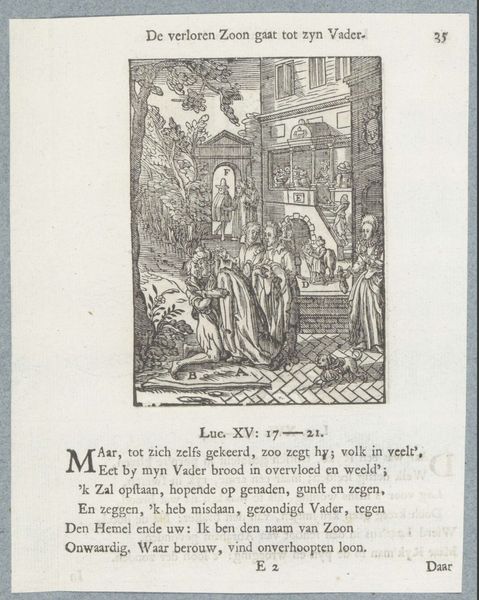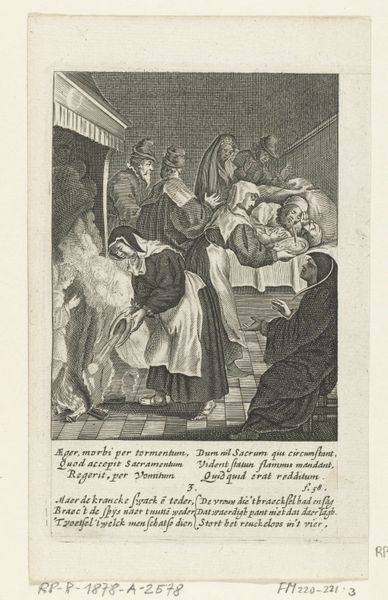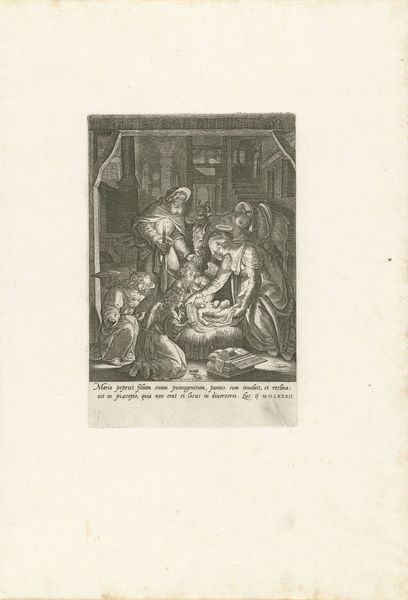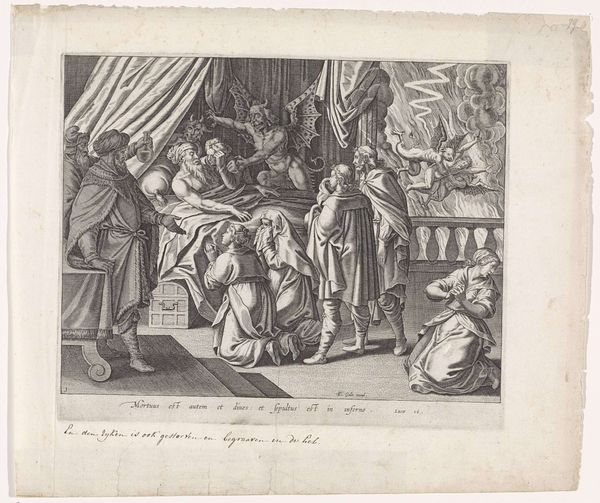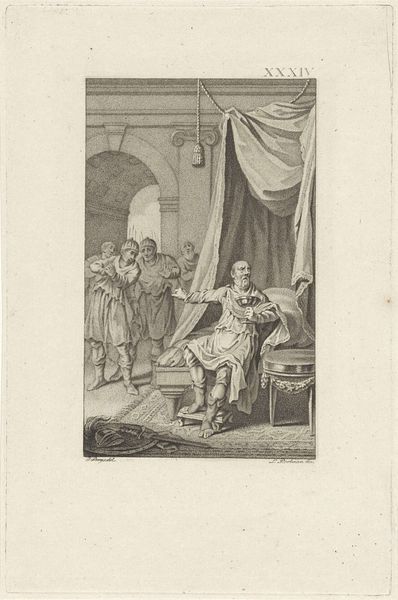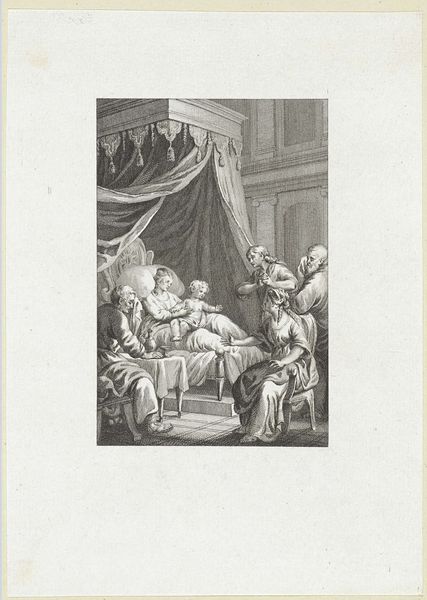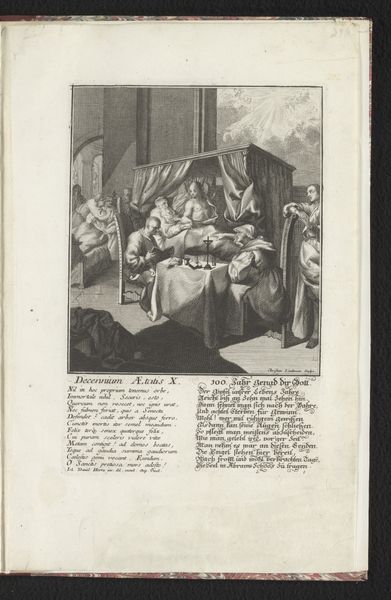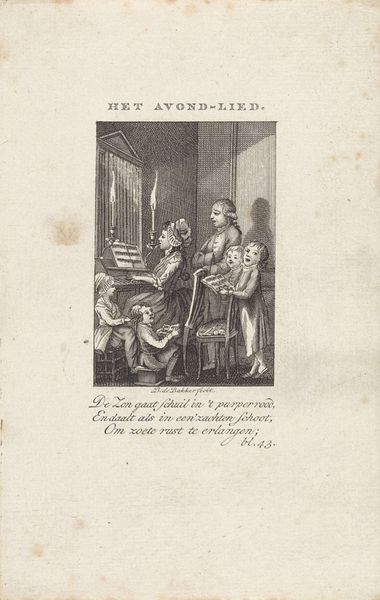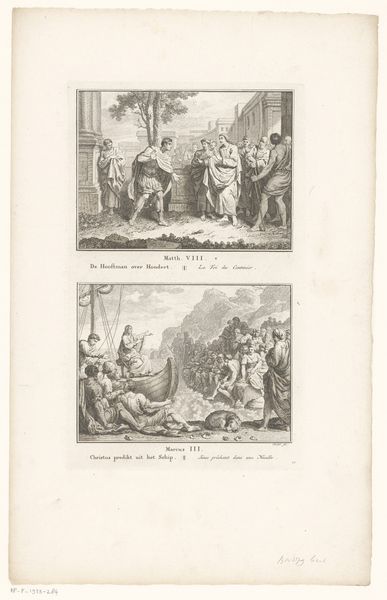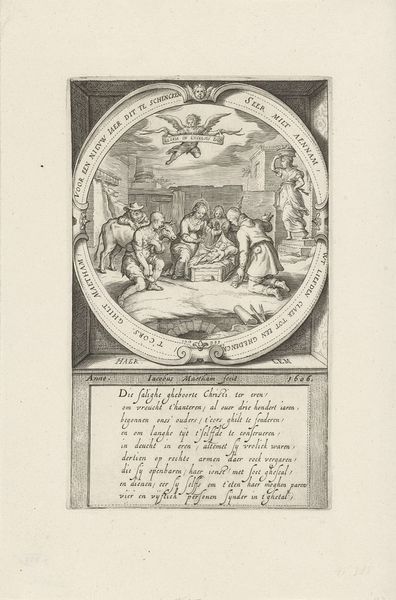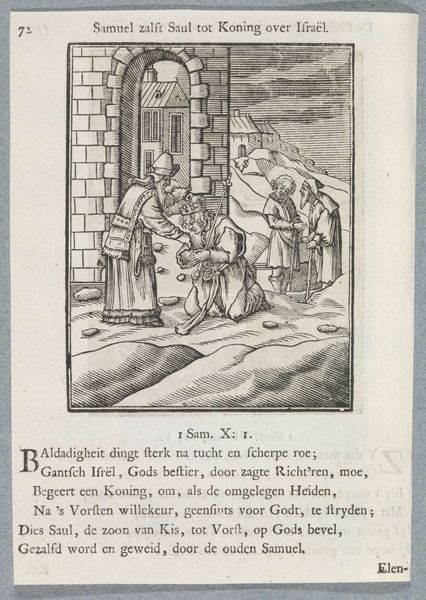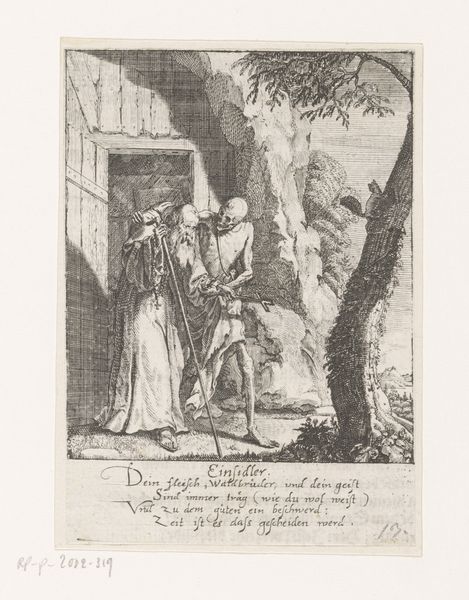
Dimensions: height 155 mm, width 110 mm
Copyright: Rijks Museum: Open Domain
Editor: This engraving, "Atrocities in the English Prison" by Cornelis Bogerts, dates back to about 1781. It depicts quite a gruesome scene; body parts are hanging from the ceiling of a prison. What’s striking to me is the intent behind creating something so disturbing and sharing it publicly. What do you make of it? Curator: Indeed, a potent piece. This work operates within a long history of using images to critique institutions. In this case, the English prison system is in the crosshairs. What makes it so striking, considering the period’s socio-political tensions? Think about the rise of abolitionist movements, prison reform debates, and the role of public opinion. Editor: So, it's not just a random act of violence depicted; it's a commentary, aiming to influence public perception. Do you think it's effective? The artist's message is quite overt. Curator: Its effectiveness lies in its appeal to emotion and moral outrage, aligning with reform movements of the time. What is depicted resonates with the political and religious climate? It challenges viewers to confront the ethics of imprisonment and justice itself, making it quite potent within the public sphere. This is particularly crucial considering how imagery and text could sway public sentiment in an era before mass media. Editor: That definitely provides some valuable historical context, helping me better understand its cultural significance. Curator: Exactly, seeing it as a piece of advocacy contributes new knowledge of that moment in history. Editor: I think I'll carry that lens with me moving forward when considering art's broader role.
Comments
No comments
Be the first to comment and join the conversation on the ultimate creative platform.
